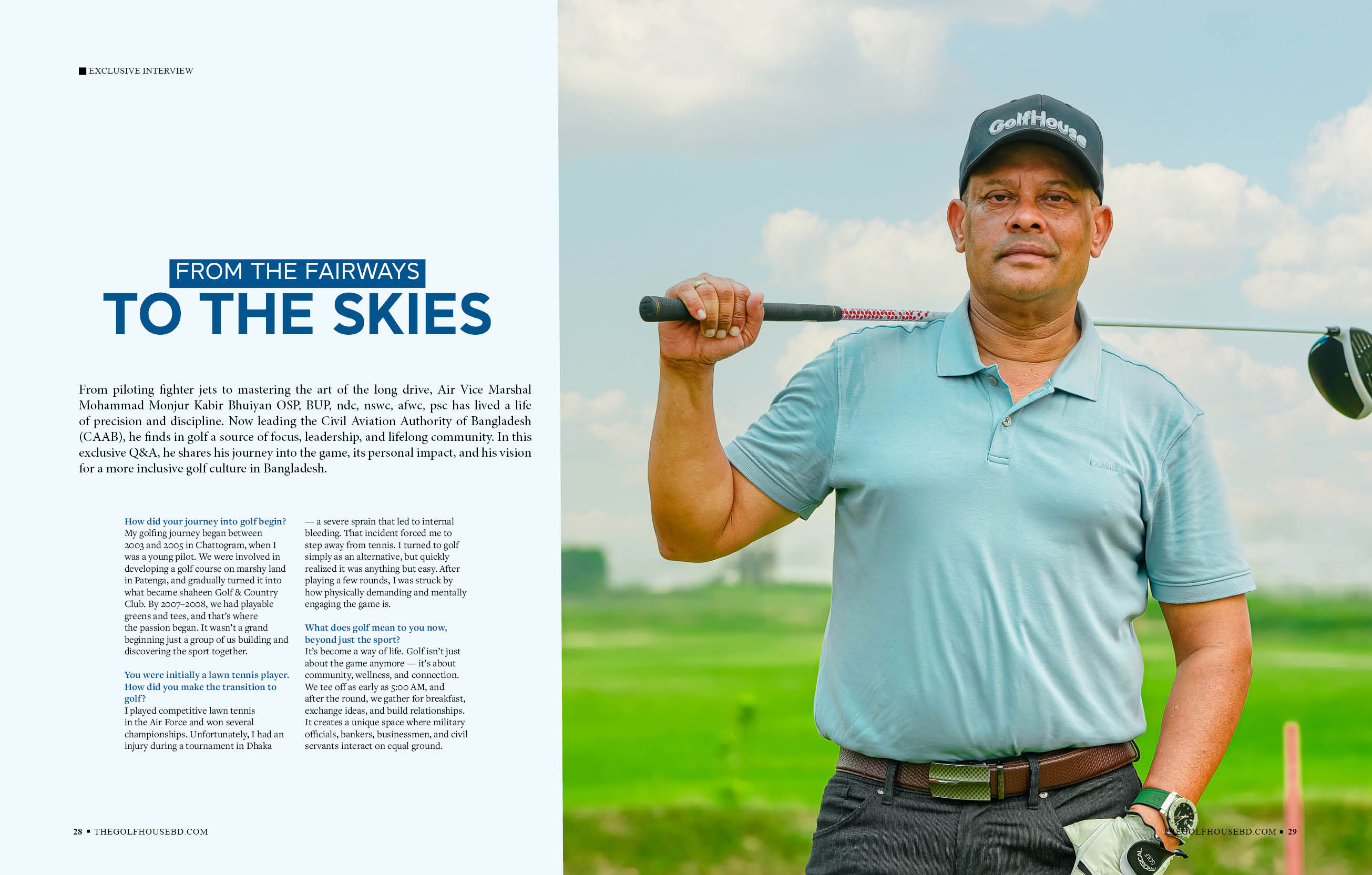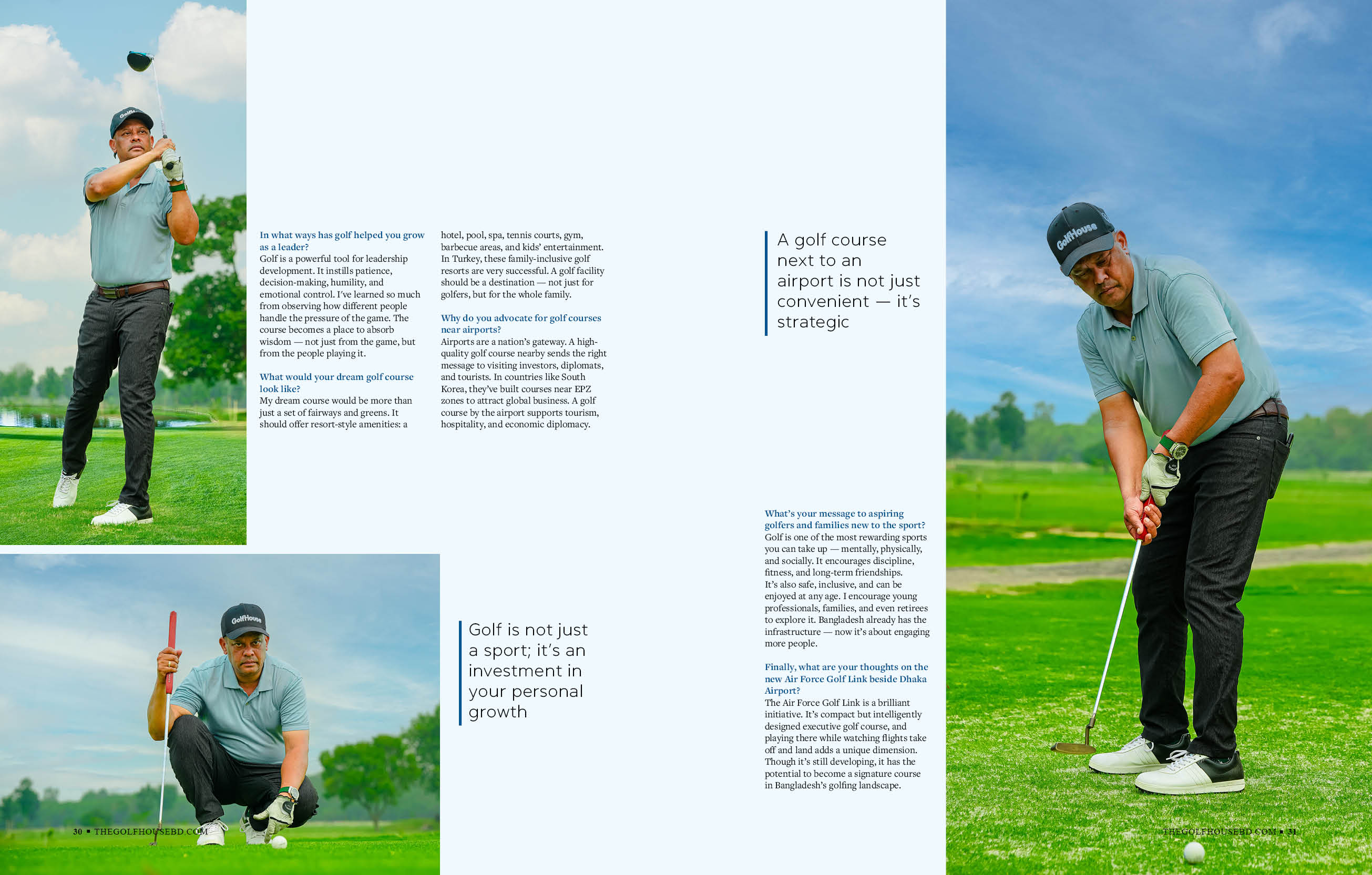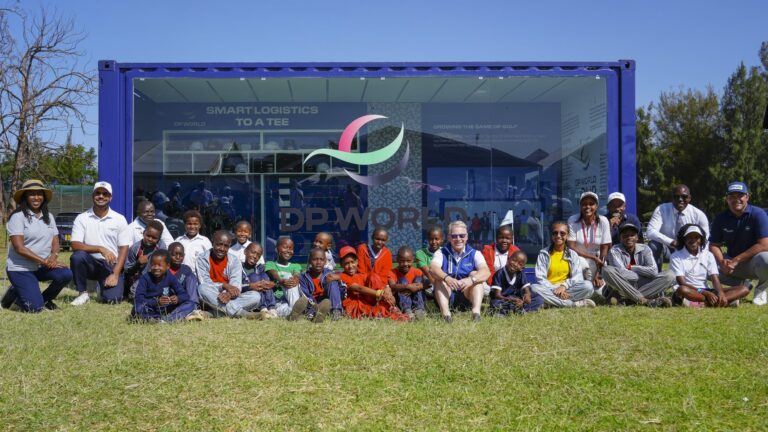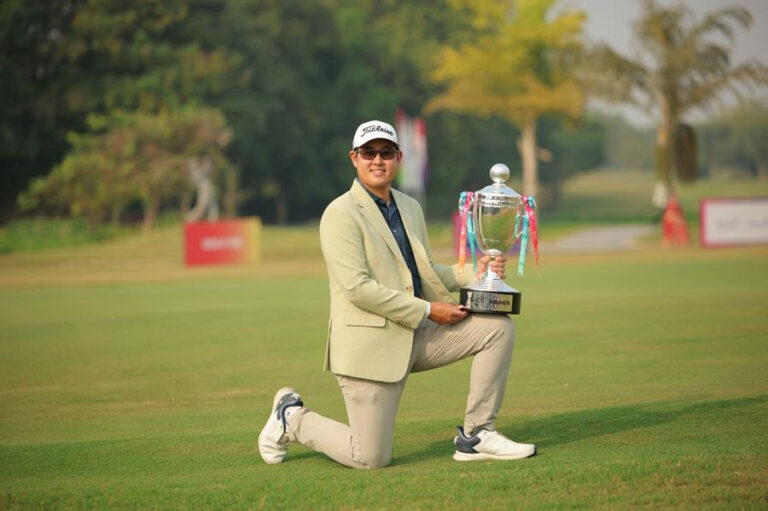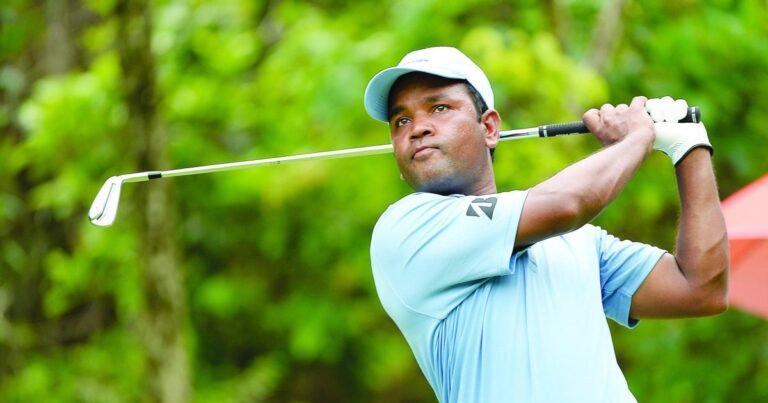From piloting fighter jets to mastering the art of the long drive, Air Vice Marshal Mohammad Monjur Kabir Bhuiyan OSP, BUP, ndc, nswc, afwc, psc has lived a life of precision and discipline. Now leading the Civil Aviation Authority of Bangladesh (CAAB), he finds in golf a source of focus, leadership, and lifelong community. In this exclusive Q&A, he shares his journey into the game, its personal impact, and his vision for a more inclusive golf culture in Bangladesh.
How did your journey into golf begin?
My golfing journey began between 2003 and 2005 in Chattogram, when I was a young pilot. We were involved in developing a golf course on marshy land in Patenga, and gradually turned it into what became shaheen Golf & Country Club. By 2007–2008, we had playable greens and tees, and that’s where the passion began. It wasn’t a grand beginning just a group of us building and discovering the sport together.
You were initially a lawn tennis player. How did you make the transition to golf?
I played competitive lawn tennis in the Air Force and won several championships. Unfortunately, I had an injury during a tournament in Dhaka — a severe sprain that led to internal bleeding. That incident forced me to step away from tennis. I turned to golf simply as an alternative, but quickly realized it was anything but easy. After playing a few rounds, I was struck by how physically demanding and mentally engaging the game is.
What does golf mean to you now, beyond just the sport?
It’s become a way of life. Golf isn’t just about the game anymore — it’s about community, wellness, and connection. We tee off as early as 5:00 AM, and after the round, we gather for breakfast, exchange ideas, and build relationships. It creates a unique space where military officials, bankers, businessmen, and civil servants interact on equal ground.
In what ways has golf helped you grow as a leader?
Golf is a powerful tool for leadership development. It instills patience, decision-making, humility, and emotional control. I’ve learned so much from observing how different people handle the pressure of the game. The course becomes a place to absorb wisdom — not just from the game, but from the people playing it.
What would your dream golf course look like?
My dream course would be more than just a set of fairways and greens. It should offer resort-style amenities: a hotel, pool, spa, tennis courts, gym, barbecue areas, and kids’ entertainment. In Turkey, these family-inclusive golf resorts are very successful. A golf facility should be a destination — not just for golfers, but for the whole family.

Why do you advocate for golf courses near airports?
Airports are a nation’s gateway. A high-quality golf course nearby sends the right message to visiting investors, diplomats, and tourists. In countries like South Korea, they’ve built courses near EPZ zones to attract global business. A golf course by the airport supports tourism, hospitality, and economic diplomacy.
What’s your message to aspiring golfers and families new to the sport?
Golf is one of the most rewarding sports you can take up — mentally, physically, and socially. It encourages discipline, fitness, and long-term friendships. It’s also safe, inclusive, and can be enjoyed at any age. I encourage young professionals, families, and even retirees to explore it. Bangladesh already has the infrastructure — now it’s about engaging more people.
Finally, what are your thoughts on the new Air Force Golf Link beside Dhaka Airport?
The Air Force Golf Link is a brilliant initiative. It’s compact but intelligently designed executive golf course, and playing there while watching flights take off and land adds a unique dimension. Though it’s still developing, it has the potential to become a signature course in Bangladesh’s golfing landscape.



